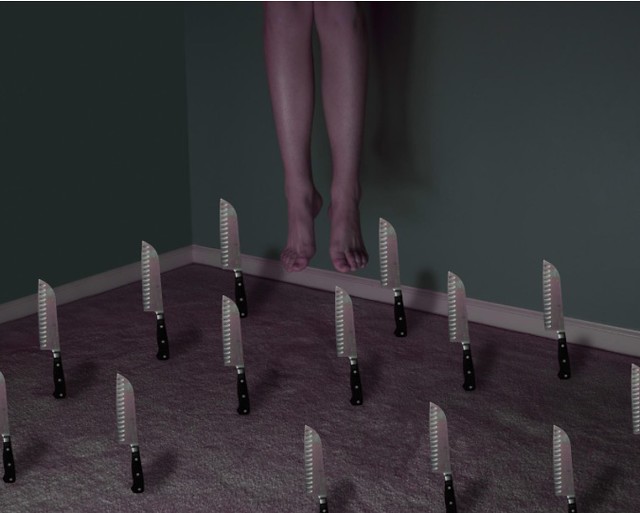Can the school newspaper get in trouble for publishing pictures that the administration banned from a recent school art show?
While the administration does have an interest in protecting student wellbeing, these photos are accompanied by articles and are political speech. Political speech is highly protected speech and the school’s reason for censoring is significantly weakened. While the “copycat effect” of student suicide is a problem, the student journalists are not reporting on student suicide or even suicide in general. Rather, the article is about the administration’s decision to ban the photos from the art show.
The newspaper is also a limited public forum, which means that the journalists are given greater discretion as to what they may publish in the newspaper. The administration has less authority to censor the newspaper given the public forum, and especially because this is political speech. While the newspaper is school-sponsored, the administration lacks legitimate educational concerns and likely lacks the ability to censor the paper in this case.
For starters, the school is justified in censoring these photos in certain circumstances. We just don’t think this is one of those circumstances. Why? Two reasons: political speech and the lack of a “copycat effect.”
Schools have an interest in protecting students from harm, but teenage suicide and self-harm is a really big issue and the student art show with these photos can be considered political speech. Political speech has a huge amount of protection under the First Amendment, and this protection undermines the school’s argument. In the landmark court case of Tinker v. Des Moines Independent School District, the United States Supreme Court determined that students’ anti-Vietnam War armbands were political speech and were protected by the First Amendment because they did not cause a substantial disruption to the school environment. While the Des Moines school had an interest in student wellbeing and wanted to avoid protesting or hard feelings about the war, the students who wore these armbands were touching on a political topic and not doing anything to threaten anyone.
The articles in this scenario featured comments from people who were unsure about how the administration decided which photos to ban and how the artists felt about the ban. The opinion article also invited readers to comment on the censorship, which created a setting for discussion about the school’s decision. The speech here was political speech about a government-funded public school and its administration’s decisions. While the school could argue that it has an interest in protecting students from suicide, nothing in the student newspaper hinted at, mentioned, or described suicide. It was only about the ban. Just as the speech in the case Tinker was non-disruptive political speech and was protected under the First Amendment, the speech in this case is likely protected too.
A suicide “copycat effect,” according to a 1989 study from the Center for Disease Control, is when exposure to the suicide or suicidial behavior of one or more persons influences others to commit or attempt suicide. Teens can be particularly susceptible to the copycat effect. Several factors contribute to this, including simplistic explanations for suicide, repetitive or excessive reporting of suicide, sensationalistic coverage of suicide, reporting “how-to” descriptions, presenting suicide as a tool, and glorifying persons who commit suicide. While the administration could’ve argued that the photos could lead to this copycat effect, its argument is undermined by the fact that the student newspaper does not discuss suicide at all.
The student journalists did not publish simplistic explanations for suicide, engage in repetitive or excessive reporting of suicide, sensationalize suicide, report “how-to” descriptions, present suicide as a tool, or glorify persons who committed suicide. Because the articles do not report on suicide or mention the idea, the likelihood of a copycat effect is very low. While the photos could be considered glorifying suicide, the artists explained to the newspaper that the photos are about dark, gloomy thoughts and anxiety, not suicide.
What kind of censorship powers does the school have in general? Do those powers change things?
One of the first steps we take in analyzing a school’s censorship powers is determining what kind of forum we are working with. There are three – public forum, limited-public forum, and non-public forum – and they range from least restrictive to most restrictive, respectively. Under this particular school district’s policy, it is a limited-public forum and the school district has less discretion to censor the newspaper.
While the school’s policy is a good place to start to see what kind of power the district has over publications, there are several factors we can also look at to help figure out what forum we are working with. These factors include (1) whether students produce the newspaper as part of the curriculum; (2) whether the students received grades or credit for participating in the course; (3) whether a faculty member oversaw the newspaper’s production; (4) whether the school departed from its policy of producing the paper as a part of its curriculum; (5) the degree of control the administration exercised over the newspaper; and (6) written documents from the Board of Education.
Because the newspaper is designated as a limited-public forum in the district policy, it is unlikely that the administration can censor the paper in this instance. The administrator’s removal of the newspaper from the stand was probably a First Amendment violation. Many of the earlier mentioned factors work in favor of the newspaper too. Student journalists make final decisions about what is published and the newspaper sells advertisements to help support itself. Given the type of forum, it will be more difficult for the administration to punish the advisor or the students for publishing the banned photos.
To read more about determining what kind of forum your newspaper is, check out our Q & A, “How do I know if my school’s newspaper is a limited public forum?”
But, the school definitely has concerns here. That has to matter, right?
It does, but in this case, those concerns are outweighed by the students’ First Amendment rights. We mentioned earlier that the school does have an interest in student wellbeing, but there was no risk of the “copycat effect.” The school could argue there is a legitimate educational concern here that would allow for censorship. However, we think this argument likely wouldn’t get off of the ground.
In Hazelwood School District v. Kuhlmeier, the United States Supreme Court held that educators do not violate the First Amendment by exercising editorial control over school-sponsored speech, so long as their actions are reasonably related to legitimate educational concerns. We can look at several factors to help us figure out what exactly a “legitimate educational concern” is too. Factors include (1) privacy; (2) frank talk on sexual topics and the maturity of the audience; (3) fairness and balance, including the opportunity for relevant parties to respond; (4) expert testimony regarding journalistic standards; (5) the immediacy of the editorial decision and whether it would deprive students of a paper; and (6) the experience of the faculty advisor and their expertise with editorial procedures. Schools can censor speech that is grammatically incorrect, poorly written, inadequately researched, vulgar, or unsuitable for immature audiences.
Let’s run through each one briefly to give you an idea of how it plays out.
For privacy, there are no privacy concerns here. It was no secret the administration banned the photos from students and faculty. For frank talk, there is no sexually explicit material in the photos. For fairness and balance, there is nothing in the articles that talks bad about the administration. It merely discusses the leadup and backlash to the ban and asks for all opinions regarding the matter, whether those opinions are for or against the ban. For the experience of the faculty advisor, nothing suggests they lack experience or credibility. For grammar, research, vulgarity, and suitability, the articles do not appear to display poor grammar or research, and there does not seem to be anything published in vulgar or bad taste. The administration’s best argument is that the photos are not suitable for immature audiences, but the political speech argument we mentioned earlier undermines this argument greatly.
Have questions about free speech rights?
Send your questions our way, and we'll have our team find you an answer. Keep in mind, we’re not actually your lawyers and aren’t representing you. We can definitely help clear some things up and give you some info, but if you need actual legal help for your situation, you should find a lawyer in your area. And don't worry, any information we collect is only for our own research, and we won’t share it or sell it to anyone.




